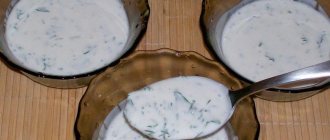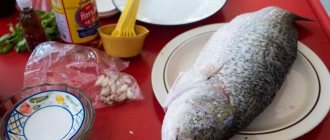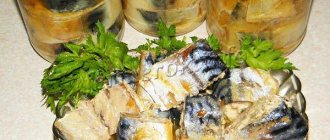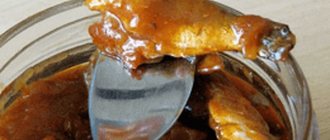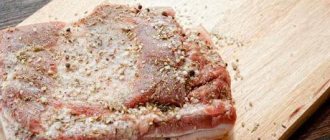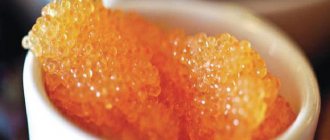Salting is one of the most popular ways of preparing fish. It is especially relevant in the warm season, when there are difficulties with storing fish, and if in the future it is planned to dry it, dry it or smoke it.
Only coarse salt is used in the process; it ensures deep salting. Fine envelops and quickly salts only the top layer of fish meat, located directly under the skin, without penetrating inside and not dehydrating sufficiently, so the onset of rotting is inevitable.
It is also unacceptable to use iodized salt; at the time of salting, iodine burns the skin of the fish, increases its temperature and leads to rapid rotting.
Almost all types of edible fish can be salted, and this can be done in several ways. The calorie content of the finished product depends on the variety and the chosen salting method. After averaging, the calorie content of 100 g of salted fish is 190 kcal.
Salted fish is used as an independent dish, and as an ingredient in many salads and appetizers, served on canapés and sandwiches, and is good as a filling for stuffing.
The chemical composition of salted fish, which contains useful elements such as fluorine, molybdenum, sulfur, is beneficial for the human body, but you should not abuse such a delicacy. It contains large quantities of salt.
Cooking instructions
Cut off the heads and tail fins of fish carcasses.
You can cook very tasty fish soup from them.
Cut the belly down the center and remove all internal organs and membranes.
Heat water to boiling. Add salt and spices for salting fish. You can take a ready-made mixture, or you can simply add 2-3 peppercorns, cloves, bay leaves, and a few whole coriander seeds. Boil everything for 3 - 4 minutes and cool to + 25 + 28 degrees.
Place the prepared carcasses in a suitable food container or other container. Pour in brine.
Keep the salted char in the refrigerator for 72 hours.
Remove the salted fish, cut it and serve.
How to quickly and tasty salt red fish?
Red fish meat is considered delicious, elite and quite expensive. All this is due not only to its taste, but also to its beneficial properties. The unique biochemical composition of all varieties of red fish has a positive effect on the body and helps in rejuvenation.
Recently, prices for red fish have increased almost to the skies, so more and more housewives prefer to salt them themselves. It's not at all difficult to do this.
Try this method:
- Wash the fish first and dry it with a paper towel.
- Cut off the fins, tail and head. If you wish, you can also rid the fish of its very fatty underbelly; not everyone is ready to eat such a delicacy.
- Using a sharp knife, cut the fish lengthwise into two halves, trying to remove the spine and ribs.
- Prepare the pickling mixture. To do this, take salt and granulated sugar in a 1:1 ratio, pepper and other spices are added to taste. Stir the resulting mixture thoroughly; it will be sprinkled on the fish for salting. Salt should be taken at the rate of 3-4 tbsp. l. per 1 kg of fish raw material.
- Pour some of the mixture prepared in the previous step into the bottom of a large bowl. Place half of the red fish, skin side down. Pour lemon juice over it and cover with the pickling mixture, lay out the bay leaf.
- Also pour the pickling mixture onto the pulp of the second half and place it skin side up in the same bowl. Sprinkle the salt mixture onto your skin.
- Cover the container with a lid and place it in a cool place. If it's freezing outside, the balcony will not work.
Regardless of the size, the fish will be ready in a couple of days, after which remove the fish from the brine and use a napkin to rid it of any remaining salt mixture. Fish prepared this way can be stored for a week.
Ideal seasonings for red fish
Here are the seasonings in red fish that are suitable for spicy salting:
- paprika, curry, saffron;
- rosemary, oregano, marjoram;
- parsley;
- fennel;
- basil;
- citrus fruits - zest and juice, especially lemon, lime, tangerine;
- ginger, wasabi;
- soy sauce;
- honey;
- allspice: red, black, white, peas;
- hot peppers: chili, jalapeno.
- sea and mineral (pink) salt;
- berry juices: cranberry, currant, cloudberry.
Neutral spices are onion, garlic, dill, bay leaf and mustard.
As a rule, the sweet-sour and spicy-sweet range is reserved for marinades. To salt fish, just choose salt, pepper and, if desired, a little mint. Spicy and minty seasonings soften the fillet and prevent it from spoiling for a long time. It is this combination that makes salted fish tasty and tender. Lemon or other juice, ginger and sauces are usually served with ready-made fish to complement the flavor bouquet.
How to properly salt river fish at home?
A simple and interesting recipe for spicy salted fish, which will be an excellent appetizer for any dish.
First, let's prepare everything you need:
- Dishes for pickling. If the weight of the fish does not exceed 1 kg, then a saucepan, deep bowl or plastic container of suitable capacity will suit you.
- Spices and herbs: coriander, bay leaf, hot peppercorns and salt.
- Fish. It must be washed thoroughly. Fish weighing less than 1 kg does not need gutting.
Procedure:
- Place the fish in the selected container in layers so that the heads lie close to the tails. On the bottom layer - the largest one.
- Sprinkle each layer with a mixture of salt and coriander, put a few peppercorns and a couple of laurel leaves on top.
- The container is closed with a slightly smaller lid, and a pressure is placed on top, the role of which can be played by a large stone or a jar filled with water.
- Then we move the vessel to a cool place. Be prepared for the juice to release from the fish after 10 hours; do not drain it until the very end of the salting process.
- After 4 days, remove the pressure, drain the brine, and wash the fish. Then put it back into the container, fill it with cold water and soak for about an hour.
- We cover the floor, table or any flat surface with towels, and lay river fish on top so that individual fish do not touch each other. Let it dry and turn it over after a couple of hours. If necessary, change newspapers and towels to dry ones.
Salted river fish prepared in this way is stored in a cool room or refrigerator.
Methods for salting fish
There are two main ways of salting fish for drying - “wet” and “dry” salting. Both methods make it possible to get equally tasty dried fish.
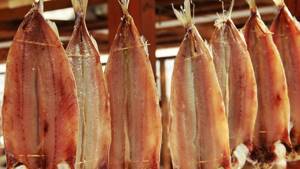
Dry salting is more often used for preparing large fish, and salting in brine is used for small and medium-sized fish. Another feature of salting fish in brine is that the meat of the finished fish is more tender.
For dry salting, you will need a container with holes or slits through which the juice released from the fish will drain (a wooden box, a plastic container with holes).
For salting fish in brine, any container with a salt-resistant coating (plastic, enamel dishes) is suitable. Aluminum containers for salting fish are not suitable, as their surface will oxidize and release impurities harmful to health.
Any salting method consists of the following steps:
- Preparing fish for salting;
- Salting fish;
- Preparing fish for drying, soaking.
Let's look at each stage in more detail.
How to salt fish for drying or smoking?
Medium or small-sized fish are usually dried. Depending on the type, there are some features of its salting before drying:
- Vobla. It is taken ungutted and uncleaned. Place in a container of suitable volume, sprinkle with salt, bay leaf and hot peppercorns. Oppression is placed on top for 3-4 days. After which the fish is thoroughly washed to remove any remaining salt, spices and mucus, and wiped dry with a towel.
- Roach (weight no more than 400 g). It is used ungutted and uncleaned, the insides are washed with a syringe with a strong salt solution to speed up salting and disinfection. The fish is placed in a container of a suitable size and filled with cold water and salt (10:1). A pressure is placed on top of the fish, the weight of which must be at least 15 kg. After 1.5 days, the fish is removed from the saline solution and washed well to get rid of mucus.
- Chekhon. For three dozen uneviscerated fish you will need 1 kg of salt. Fish raw materials are placed in layers in a container, sprinkled with salt, placed under pressure and sent to a cool place. If the fish is large, then the salting process lasts 2-3 days, for small fish - 1-2 days is enough. The liquid released during the process is drained.
After completing the salting process, the fish is thoroughly washed and soaked for a couple of hours, hung in the shade in the wind, preferably head down. This way, excess moisture flows out through the mouth, and the fish itself dries out evenly.
Depending on the ambient temperature, the drying process takes from 4 to 10 days. Dried fish is stored in a cool place away from direct sunlight.
Before you start smoking fish, it should also be salted. It is recommended to do this a couple of hours before smoking. If you do not intend to store the fish for a long time in the future, but plan to eat it right away, then you can simply rub it with coarse salt before storing it.
Basic rules for home pickling
Depending on the type chosen, red fish is salted in marinade, sauce, vegetable oil or dry seasonings:
- It is better to salt pink salmon, chum salmon, sockeye salmon, and salmon using the “wet” method.
- Dry salting is suitable for juicier trout, salmon, and nelma.
For uniform salting, use granulated sugar and coarse salt, such as sea salt. Both fresh and frozen fish, previously thawed in cold water or the refrigerator, are salted.
When purchasing a frozen product, a whole carcass is preferable, which you can cut yourself. Salted fillets or ready-made briquettes will taste significantly different, and they will not look as appetizing.
Depending on the desired result, red fish is salted in a cold place for 1-3 days, then excess seasonings and salt are removed. To avoid oxidation of the container over this period, use enamel dishes or plastic bowls with a lid. The finished food is stored only in the refrigerator for up to 5 days.
How to salt fish in a jar - step-by-step recipe
This salting method is perfect for cooking herring.
For brine per 1 liter of purified water you will need:
- 100 g coarse salt;
- 2 tbsp. Sahara;
- spices and herbs: peppercorns, bay leaf, cumin, cardamom, cloves, dill to taste.
Procedure:
- Mix all the brine ingredients, boil them and cool slightly.
- We remove the raw herring from the bones and cut it into portions.
- Place the fish in a jar and fill it with brine.
- Keep in the refrigerator for a couple of days.
- If desired, you can add vinegar and partially replace the water with wine.
Red fish according to the classic recipe
Let's start with the classic recipe for salting red fish at home. If you prefer fattier varieties, choose trout or salmon. Pink salmon and chum salmon contain less fat.
Ingredients:
- red fish fillet - 1 kg
- salt - 3 tbsp. l. with a slide
- sugar - 1 tbsp. l.
- peppercorns - 5-6 pcs.
- bay leaf - 2–3 pcs.
- fresh dill - for serving
Mix salt and sugar evenly. Cut the prepared fillet into several parts. Thoroughly rub the fish pieces with a mixture of salt and sugar on all sides. Place them on foil and place black peppercorns and a bay leaf between them. Fold the edges of the foil tightly and wrap with a clean cloth. This will create an imitation of oppression. Place the resulting package in a glass container and put it in the refrigerator for at least 48 hours. Unfold the foil and remove excess salt from the fish. Transfer the fish to a glass container, cover with a lid and keep in the refrigerator for another day. Before serving, cut the fish into thin slices, add finely chopped dill and sprinkle with lemon juice.
Cooking salted fish in brine at home
Not very fatty fish, such as pink salmon, are suitable for salting in brine. Raw fish must be removed from entrails and bones and washed well. The fillet, cleaned and cut into portions, is placed in a container of a suitable size, which is wide enough in diameter so that the brine can cover each piece of fish.
When preparing brine, consider the following ratio - for 1 kg of fish raw material we take:
- 1 liter of water,
- 100 g coarse salt,
- 2 tbsp. sugar and spices at your discretion,
- a couple of laurel leaves,
- 2-3 cloves,
- a couple of black and allspice peas.
All ingredients for the brine are combined, boiled and cooled to room temperature, after which they can be poured over the fish.
A pressure is placed on the fish filled with brine, the container is put into the refrigerator for a couple of days, after which the brine is drained, the fish is wiped with napkins and laid out for storage in a clean, dry container.
Marinade for drying river fish
If you managed to bring back a large amount of small catch from fishing, there is a need to process it. To dry river fish, you need the right brine, and ideally it should be immersed in 2-3 mixtures one by one.
Ingredients:
- fish – 500 gr.;
- water – 2 l;
- salt – 400 gr.;
- vinegar (9%) – 1 l.
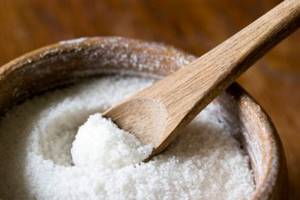
Make a weak saline solution - dissolve salt (40 g) in water (1 liter), mix, then pour the mixture over the fish for 1-2 minutes. Remove the carcasses and place them in undiluted vinegar for another 2 minutes. Lastly, place the small catch for 30 minutes in a saturated brine of boiled water (1 l) and salt (360 g).
Important! You can tell whether there is enough salt in a saturated brine by one sign: it stops dissolving in hot water.
After marinating, the river fish can be removed and hung in a well-ventilated area until completely dry.
Salted fish in a towel - it's worth a try! Photo recipe
Sea or river fish can appear in a completely new taste role when salted in a towel. The fish pieces remain quite juicy without being wet, as in the traditional salting method. Home-style salted fish is an ideal dish either on its own, solo, or with potatoes and sauerkraut.
You will need:
- Fish.
- Coarse salt.
- Terry towel.
How to cook:
The fish, in this case a mullet, is cleaned of scales and the tail and head are cut off. In a small-sized individual, you don’t have to cut open the back.
Then each piece is thickly rubbed with salt on all sides, including the inside.
Finally, the mullet is once again salted quite thickly on top and wrapped in a dry terry towel. It is also rolled up and placed in a mold.
If a certain amount of liquid flows into the mold, it is drained, and the towel is turned over and placed again until the fish is salted. The towel can be washed and reused.
The fish is left to salt for about six to seven hours; larger pieces will be completely ready for consumption only after a day. And at the same time, small fish, for example, anchovy and red mullet, can be consumed after two to three hours with this salting method.
Recipes for salting pink salmon, mackerel, chum salmon and other fish - tips and tricks!
When delicious red fish comes to the table, it is most often salted, because due to its high fat content it is able to absorb a little salt, so it is almost impossible to over-salt it.
- Prepare brine by mixing 1 liter of water with 100 g of salt, 3 tablespoons of sugar. Pour this mixture over the deboned red fish, cut into portions. An excellent result will be waiting for you in 3 hours.
- Divide the fish into two large pieces of fillet. Pour salt into the bottom of a dish suitable for salting, and place one of the pieces on top, skin side down. Rub salt on top. We also generously rub the second part with salt and place it on top of the first, meat side down. We also sprinkle salt on top, sparingly. After 6-12 hours at room temperature, the fish will be ready.
- Pink salmon, salmon, chum salmon and mackerel are best suited for this recipe. It must be divided into fillets and generously rubbed with salt. Wrap in cellophane and then in newspaper. Place the fish in the refrigerator, after a day turn it over on the other side and leave for the same amount of time.
How to choose fish for salting?
Selecting high-quality fillets is not the last task before preparing a delicious delicacy. Experts recommend buying whole carcasses, since you can often find a bonus in them - caviar, which in a separate form can cost many times more.
The first step is to evaluate the fish's eyes. A fresh catch will have clear, red eyes, but cloudy apples indicate that the batch is stale. Also, the very appearance of the meat speaks for itself: a fresh fillet will be dense, juicy and bright, and a product that has been frozen several times may lose its shape and become covered with a light coating similar to rust.
Experienced chefs remind you that it is better to choose from a product that can be inspected, and to refuse fish packaged in plastic, and even more so, hermetically sealed fish. Naturally, the smell should also attract attention. Good red fish does not have a distinct aroma.
